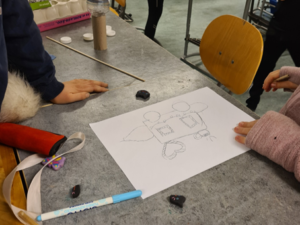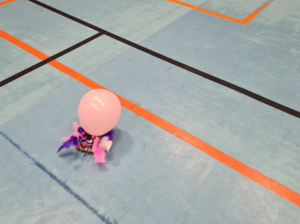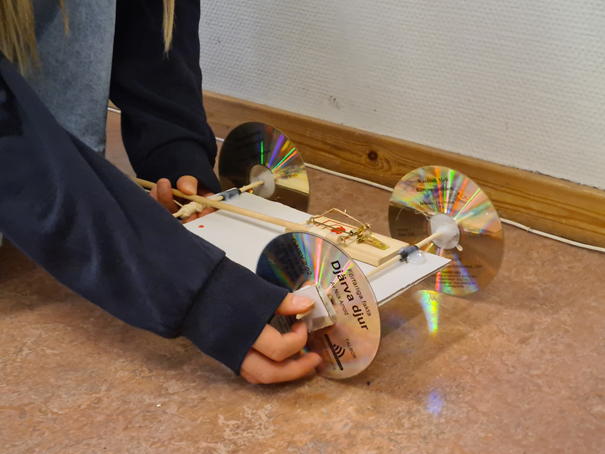
Inventing Engines, Reinventing Education
At Rådmansö Middle-School, 72 km north of Stockholm, the students turned the classroom into a laboratory.
There is often a universe, in our minds, separating the abstractness of theory from its applicability. And when a global pandemic hinders any connections between a classroom and the outer world, this distance seems to expand further and further. Forces and motion were already part of the science curriculum at Rådmansö, but teacher Nina Berglund was looking for a new, tangible way to divulgate it and found in Make it Open an opportunity to do so.
The motion of learning inevitably originates from theory. After an initial introduction to forces with the contribution of a theoretical physics professor from Uppsala, notions could finally be transformed into creations of any sort. It started with planning: students were responsible for conceiving, drawing, discussing, and testing their ideas. Most importantly, they had the opportunity to make mistakes and learn to fix them, as it only by stretching, lightening, or compressing formulas that we can truly understand their meaning.
Gallery: a balloon-propelled car, design and final product. During the Swedish class, the teacher asked the students to write about the cars they created. As the activity was carried out in December, a student from grade 4 wrote about a Christmas elf who wished for a balloon-powered car to use in the summertime—when julmust, a Christmas drink, is not available as fuel.
Then, a new challenge. Because nothing can be created nor destroyed, but can only change form, the students had to engage with the choice of materials, trying to make the best use of the resources available. Compact discs, used cardboards, and mouse traps found new life, being reinvented as gearwheels and beams.
For some, this activity represented the possibility to demonstrate their unexpressed imagination and took advantage of it to finally concretise ideas they had been cultivating in their minds for long. For others, who had rarely revealed some engagement during science classes, it was a chance to develop more curiosity for the unknown and demonstrate their brightness. In general, this activity, and especially its more challenging components, proved to be a productive catalyst that released the immense inert creativity of the class.
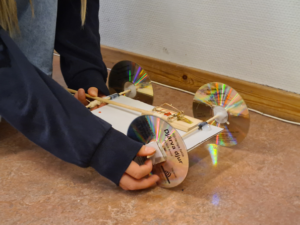
Photograph: a vehicle made from 100% recycled materials.
At parent–teacher–student meetings, the students were able to proudly show their creations to their parents. These latter, moreover, could follow the whole planning activity, streamed digitally, and received updates via the monthly newsletter. The visit at Tom Tits Experiment concluded this experience, being welcomed with particular excitement by the students who discovered a new perspective of mechanics by becoming themselves part of human-sized experiments. Paraphrasing a young inventor’s remark, learning does not have to be boring.
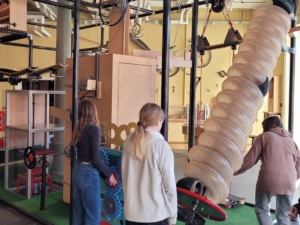
Photograph: the trip to Tom Tits.
Pictures credit: Rådmansö Middle-School.
